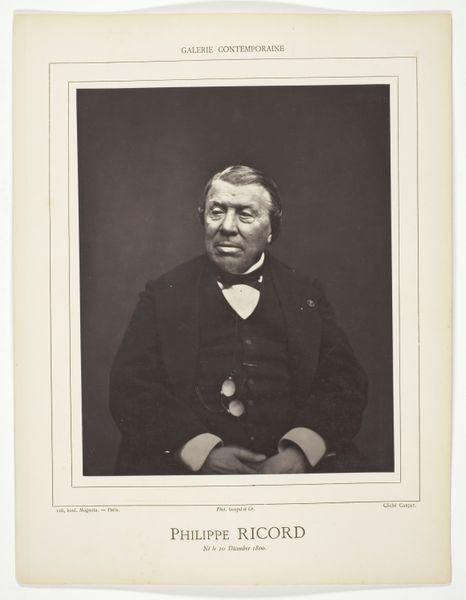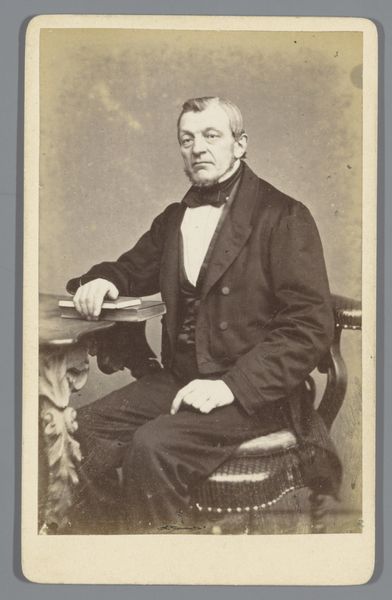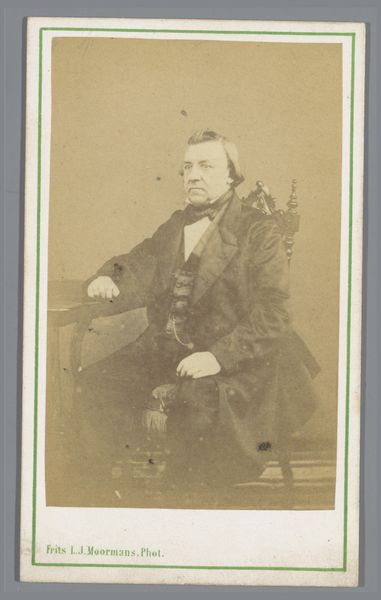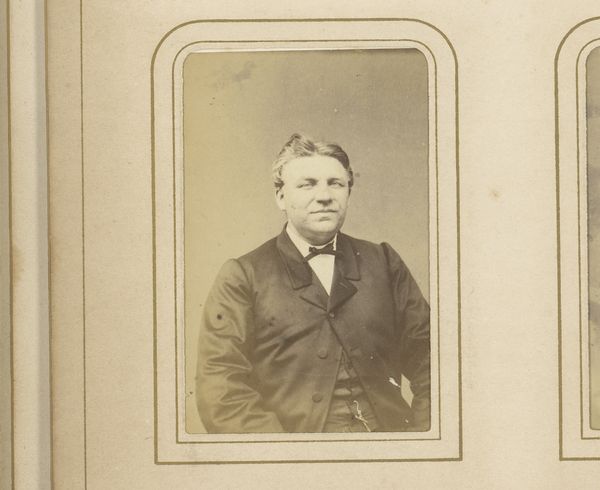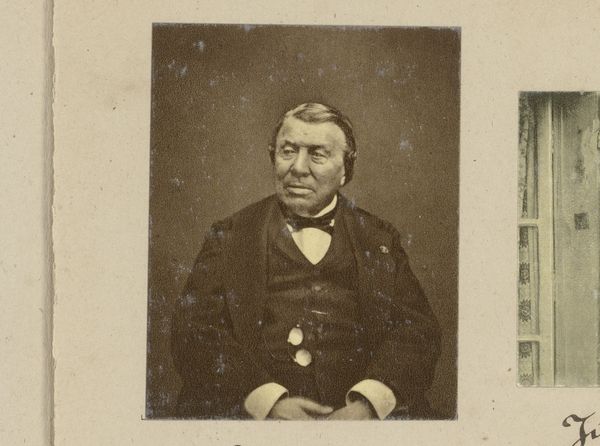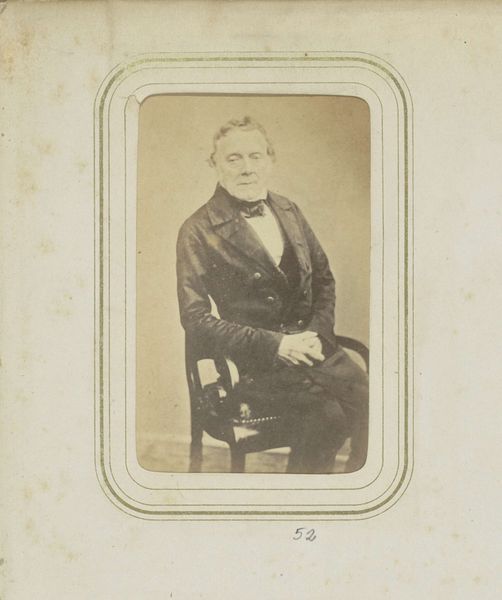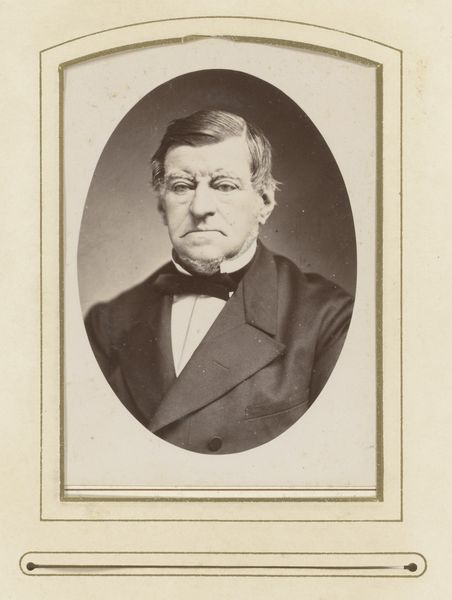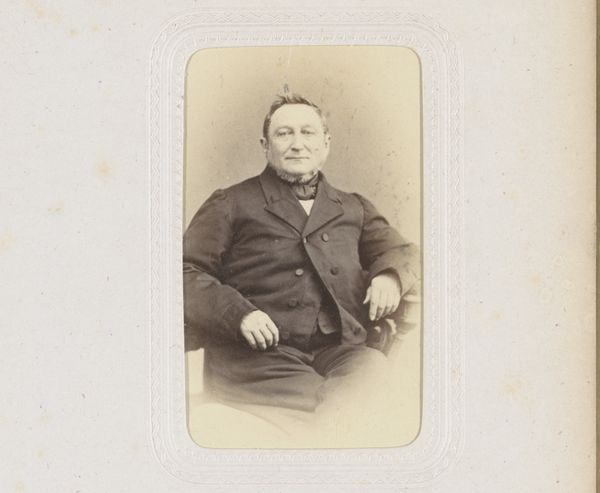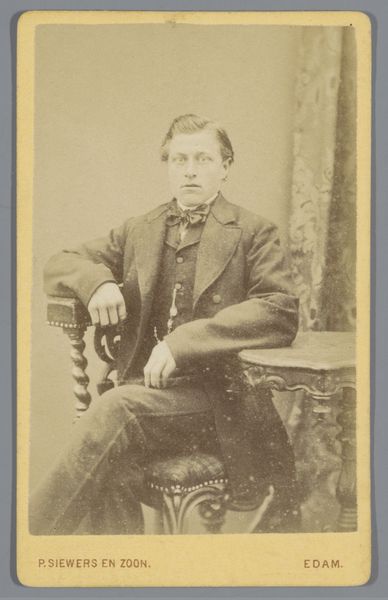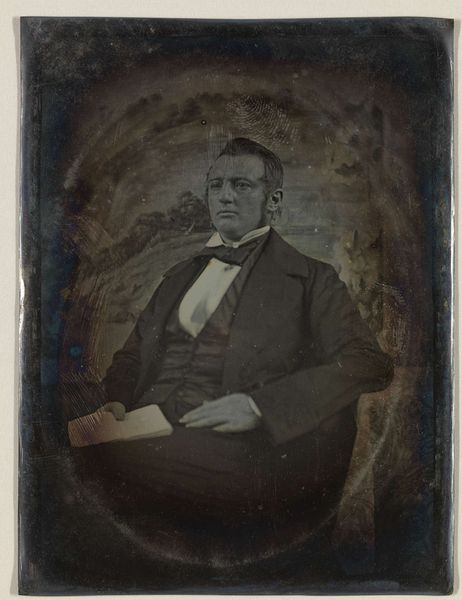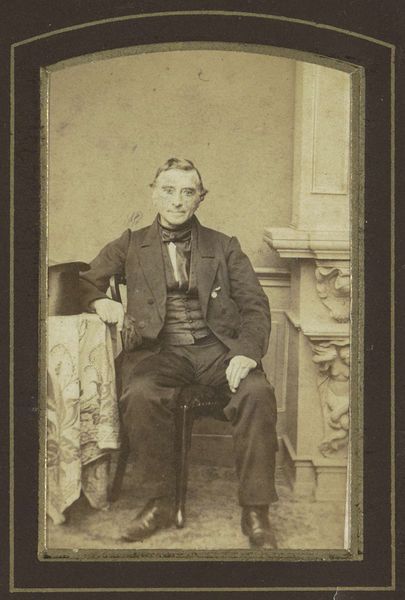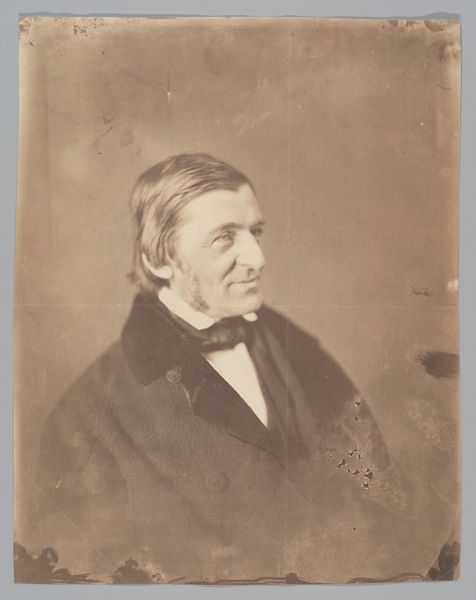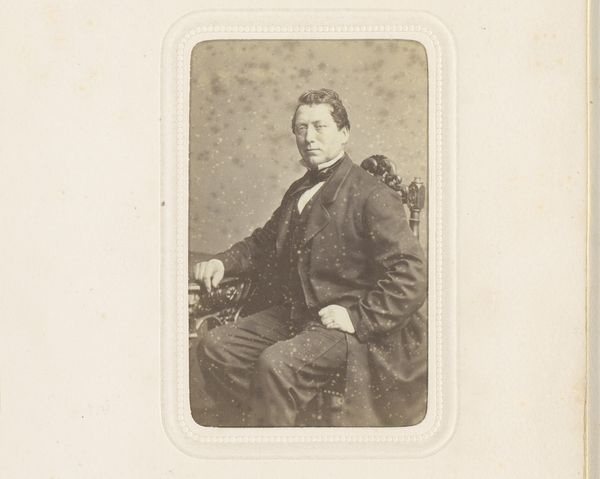![[Seated Man in White Vest and Dark Coat] by Franz Antoine](/_next/image?url=https%3A%2F%2Fd2w8kbdekdi1gv.cloudfront.net%2FeyJidWNrZXQiOiAiYXJ0ZXJhLWltYWdlcy1idWNrZXQiLCAia2V5IjogImFydHdvcmtzLzQ4YjNmNDg3LTdmYTMtNDMwNC05YjlkLTc3MWU0NzdkNTUwYy80OGIzZjQ4Ny03ZmEzLTQzMDQtOWI5ZC03NzFlNDc3ZDU1MGNfZnVsbC5qcGciLCAiZWRpdHMiOiB7InJlc2l6ZSI6IHsid2lkdGgiOiAxOTIwLCAiaGVpZ2h0IjogMTkyMCwgImZpdCI6ICJpbnNpZGUifX19&w=3840&q=75)
[Seated Man in White Vest and Dark Coat] 1850s - 1860s
0:00
0:00
Dimensions: 25.5 x 21.5 cm. (10 1/16 x 8 7/16 in.)
Copyright: Public Domain
Editor: This daguerreotype, dating back to the 1850s or 60s, portrays a seated man in a white vest and dark coat. It's such an austere and compelling image. What stories do you think it tells us about the era? Curator: Well, it's fascinating how this seemingly simple portrait encapsulates a crucial period of social transformation. Daguerreotypes, in their early days, democratized portraiture. Suddenly, likenesses weren't just for the elite painted by hand, but available to a broader segment of society. What do you think the sitter's posture and attire tell us? Editor: I notice the way he is looking off to the side, perhaps implying his awareness of the photographer but also perhaps alluding to something more... What's most striking, to me, is the sense of respectability in his bearing. Does the portrait communicate any broader political messages to you? Curator: Absolutely, especially when considering the historical context. This was a time of immense upheaval – industrialization, burgeoning middle class, evolving societal norms. The careful posing and controlled expression speak to the sitter's aspiration to project a specific identity. He’s performing respectability, almost. The rising middle class craved recognition, and portraiture, especially through new technologies like daguerreotypes, provided a potent tool. This photograph marks a significant power shift – literally, who had the power to be seen and represented. Editor: It’s incredible how a single image can hold so much historical weight. Looking at this portrait again, I now see not just an individual, but a symbol of societal change. Curator: Exactly. Art is rarely created in a vacuum. Understanding the social and political forces at play can illuminate the deeper meanings and significance of any artwork.
Comments
No comments
Be the first to comment and join the conversation on the ultimate creative platform.
